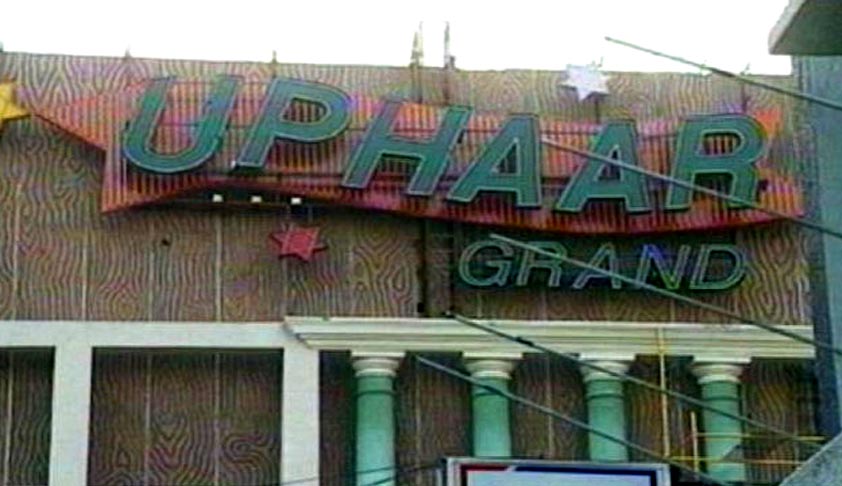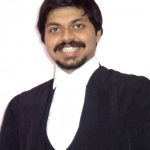Uphaar 'Re'tragedy : Judge centric sentencing & Future course
Namit Saxena
26 Aug 2015 3:18 PM IST
6 days back, a three judge bench of the Supreme Court imposed a fine of Rs 30 Crores each on Gopal & Sushil Ansal pertaining to the tragic fire incident in 1997 at the Uphaar Cinemas, Delhi claiming lives of 59 cine enthusiasts due to asphyxia. The only reason awarded in a 2 para judgment is old age. Not only does such sentencing gives a wrong message that the rich and influential can...
6 days back, a three judge bench of the Supreme Court imposed a fine of Rs 30 Crores each on Gopal & Sushil Ansal pertaining to the tragic fire incident in 1997 at the Uphaar Cinemas, Delhi claiming lives of 59 cine enthusiasts due to asphyxia. The only reason awarded in a 2 para judgment is old age. Not only does such sentencing gives a wrong message that the rich and influential can escape the clutches of legal imprisonment by paying money but also it sets a bad precedent narrowing down the trust a common man devotes to the highest judiciary.
Denial of Natural Justice
Firstly and foremostly, the hearing was a poster example of denial of natural justice. The 3 judge bench led by Justice Anil R Dave heard Ram Jethmalani for Ansals at length but not K.T.S Tulsi and Harish Salve representing victims & CBI. The judgment was uploaded only yesterday with a minor alteration of subjecting non payment of 60 crores within 3 months to imprisonment. I was very curious as to what reasons will the bench accord in its defence for not directing any sentence of imprisonment. It also attracted my special attention as to how will the bench note arguments put forward by the victims and the investigation agency against non imposition of imprisonment. It as is evident by the judgment now, the bench has neither recorded submissions by Ram Jethmalani nor any opposition to the same by Salve and Tulsi. Both Salve & Tulsi had a very polite and meek chance to briefly oppose (in response to a query) that they wanted maximum sentence i.e. 2 years. Even that single line has not been incorporated in the judgment.
Future Course: Review & Curative
A day after pronouncement, Harish Salve had sought 15 minutes to refute arguments put forward by Ram Jethmalani and then leave it to the wisdom of the court. The bench rejected Salve's 15 minutes plea. So the judgment can be challenged prima facie on the ground of denial of natural justice only in the review petition. It is settled law that in review petition, the petitioner has to cite an error apparent on the face of the record. The error apparent is twin fold; denial of natural justice and non determination of conviction after crystal clear establishment of guilt. However, review petitions are heard and decided in chambers by the same bench which heard the principal matter, which dilutes possibility of getting desired result at that stage. I recollect, the review petition against the Naz foundation judgment by Justice Singhvi was dismissed summarily at the threshold in review by Justice Dattu.
What raises hopes is the possibility of a healthy hearing in the curative petition similar to what is expected in the Naz Foundation case. In a curative petition, 2 judges who heard the matter ie Justices Kurian Joseph and Adarsh Kumar Goel & 3 senior most judges I.e Justices H.L.Dattu, T.S.Thakur & Anil Dave are likely to constitute the bench and hear it. In case any judge retires, the bench is reshuffled accordingly. The concept of curative petition, now also incorporated in Supreme Court Rules, 2013 traces its birth to a 2002 constitution bench judgment in Rupa Ashok Hurra v Ashok Hurra. The judgment put forward denial of natural justice as one of the two grounds for entertaining a curative petition, the other ground being an allegation of bias on any of the judges who decided the principal matter.
Interestingly, one of the three judges who decided on Uphaar sentencing, Justice Kurian Joseph had while hearing Yakub Memon's petition against his death warrant recorded that the curative bench should not confine itself with these two grounds only but should also consider a fresh ground not raised earlier if it is material to the case. He had also questioned the Supreme Court rule of excluding the judges who heard the review petition from hearing the curative petition if they were not a part of the bench that delivered the principal judgment. The composition of the subsequent benches however depends on delay attributed to filing of petitions and due retirements.
The reference
To add to the curiosity, the 3 judge bench was referred to decide on the quantum after a split verdict by a 2 judge bench comprising of Justices T.S.Thakur (Next CJI and who may sit in curative bench as well) and Gyan Sudha Misra. The split judgment dated 05/03/2014 founded the Ansals guilty of criminal negligence in separate opinions. However, the two judges differed in their views on sentencing. While Justice Thakur was of the opinion that the sentence of one year imposed by delhi High Court should not be enhanced, Justice Misra unconvinced by High Court's reasoning on alteration of the 2 year term granted by the trial court re-enhanced the sentence to two years substitutable by a fine of Rs 50 Crore each. In a self contradictory opinion, Justice Thakur cited State of M.P v Ghanshyam Singh (2 judge, 2003) supporting that a sentence ought not be reduced only due to long pendency of the matter. On the contrary, he concluded that the sentence could not be altered as delay has often been made a basis for the award of a reduced sentence. This again benefitted the ansals using dilatory tactics for years.
Use of dilatory tactics by Ansals
Delay as a mitigating factor in sentencing has been dealt by the Supreme Court in a plethora of judgments. In absence of an authoritative text as to delay attributable to any party or concurrent delays as to tilt balance on whose side, the sentencing process has largely suffered converting its textual form into judge centric rather than being principled. Confining myself to chronology of the Uphaar case in Supreme Court, the case was first listed on 29/10/2010 before a two judge bench of Justices Thakur & Sirpurkar (Retd). On 24/08/2011 it was listed before Justices Thakur & S.H.Kapadia (Retd) which got adjourned repeatedly on requests of Ram Jethmalani again. On 09/11/2011 it was put before a bench of Justices Thakur & Dipak Misra. The first listing before the bench of Justices Thakur & Gyan Sudha Misra (Retd) was done on 08/02/2012 and the arguments by Ram Jethmalani commenced on 16/02/2012. After hearing the parties, on 17/04/2013 the arguments were concluded and the judgment was reserved. Usual to the style of Justice Gyan Sudha Misra, the split verdict was pronounced only after one year on 05/03/2014. It is not arcane knowledge that the victims did not gain any benefit from the delay. It was a planned strategy of Ram Jethmalani to first have a prolonged trial, then a lengthy first appeal and then a span of 5 years at the Supreme Court to claim delay and old age of Ansal duo. Ironically, this is the only reason Justice Thakur put forward as a mitigating factor for non enhancement of sentence.
Conclusion
Keeping in mind that the loss of 59 lives due to criminal negligence is no less than a genocide, imposition of no sentence of imprisonment is very disheartening. The very next day while addressing the press, Ram Jethmalani called this judgment as the best judgment ever by the Supreme Court! Sadly, the Supreme Court has been invoking the theory of collective conscience to justify imposition of death penalties whereas it fails dramatically to use the same doctrine to give simple imprisonment! Whether this doctrine has to be used whimsically and selectively remains unanswered. Nevertheless, I sincerely wish that this judgment is never used as a precedent to give options to the rich to evade imprisonment by shedding few bucks from their big pockets. I recollect words of Tennyson here
“A land of settled government,
A land of just and old renown
Where freedom broadens slowly down
From precedent to precedent”
Namit Saxena is a Lawyer



